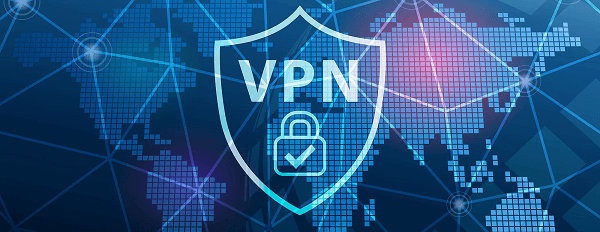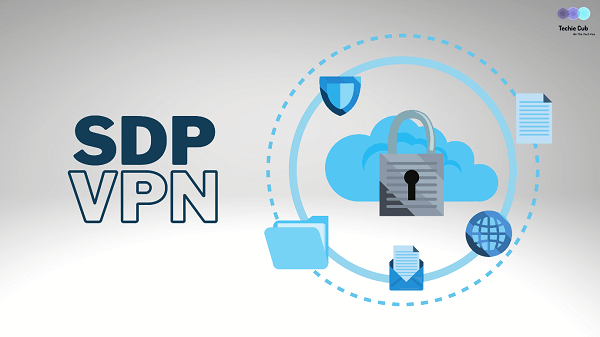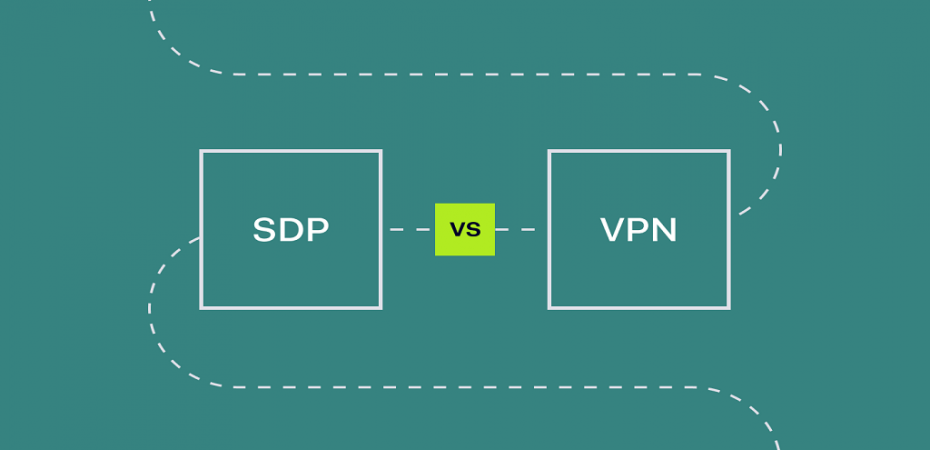Working onsite is becoming unpopular as transitioning to remote work is becoming the norm. As such, the resources remote workers depend on are also migrating to the Cloud to rise to the demand for effectiveness and security.
The combination of remote working and Cloud storage has posed a severe problem for security managers. Data leaks are the main threat, while malware attacks follow. So you need to understand practical security tools and how to utilize them to work remotely safely.
This article will discuss which is superior: Software Defined Perimeters (SDPs) or traditional VPN systems.
Software-Defined Perimeters (SDPs) adopt a modern approach to securing the network that prevents the inherent weakness of traditional perimeter security technologies like Virtual Private Networks. Unlike the hardware-centric method previously adopted, SDP’s software-based process works along with today’s cloud infrastructure and hybrid workforces.
A comprehensive understanding of virtual private networks and software-defined perimeters will help us to reach a concrete conclusion of which of the tools is superior.
What Is A Virtual Private Network?

A virtual private network called a VPN is a security measure adopted to give you online privacy by developing a private network out of a public internet connection and encrypting your data.
VPNs cover your internet protocol (IP) address to make it impossible for your online actions to be traced. In addition, this service provides encrypted and secured connections to offer greater privacy, even more than a secured Wi-Fi hotspot.
A virtual private network is a privacy tool that should be used when logging on to the internet via a public place like a hotel lobby, coffee shop, or other spots that grants access to free public Wi-Fi.
It creates a form of a tunnel that prevents your online activity from being seen. This includes the files you downloaded or the links you click so that cybercriminals or other snoops can’t see them.
What Is A Software-Defined Perimeter?
A software-defined perimeter is a security that hides an Internet-connected infrastructure like routers and servers so that it is invisible to external parties and attackers,
Whether hosted in the cloud or onsite, the focus of the SDP is to base the network perimeter on software rather than hardware. Therefore a company that adopts an SDP is opting for invisibility over its infrastructure so that outsiders can’t see it. Although, authorized users will be able to access the infrastructure.
SDP is a network that sits at the top of another network connected with logical or virtual links — that hides network resources within a perimeter. It acts as an invisible cloak or cloud to secure network resources.
It creates a virtual boundary around a company’s assets at the network layer but not the application layer. Hence separating it from other access-based controls that limit users’ privileges but give room to broad network access is imperative.
Difference Between SDPs And VPNs
To effectively test the efficacy of remote access solutions, there are three main factors to be considered which are:
- The strength of the security
- The flexibility of management
- End-user experience.
The Strength Of Security
VPN
- Authentication after access
- There is no device risk assessment
- It is tough to adopt the least privileged access
- IP-based access
- Open ports are exposed to the internet
- Network access is required for applications
SDP
- Isolated application access to applications
- Applications remain invisible until the authorization and authentication of a user’s identity.
- Access after authentication
- Secure users’ access to any application, whether located on-premises or cloud
- Identity-centric access
- A repeated risk assessment at the user, device, and application levels
- Least privilege access via IAM integration
Management Features
VPN
- Static capacity and Inflexible infrastructure.
- It is appliance-based
- Susceptible to misconfiguration and also dependent on the configuration settings of other technologies
- The administrative overhead of management
SDP
- Cloud-delivered
- Integrates with SIEM, IAM, and other areas of the technology stack
- Infrastructure management is outsourced to the service provider
- Dynamically gauge according to the needs of the business.
User Experience
VPN
- There is a constant need for re-authentication due to the fragmented access experience.
- It provides access only to remote users.
- Unreliable on cellular and Wi-Fi as well as mobile devices
- Legacy design results in connectivity and speed issues
SDP
- Constant access across platforms and devices
- It offers the same access experience to all employees, whether onsite or remotely.
- Handles network transitions efficiently and is built for all the types of devices
- Distributed service edge gives room for efficient routing to minimize latency
- Seamless authentication and SSO(Single Sign-On)
SDP is perceived as the most effective of remote access technologies because it resolves most of the shortcomings associated with the management, security, and VPN user experiences.
Gartner predicted that by 2023, not less than 60% of organizations would phase-out of their remote access VPN to opt for Zero Trust Network Access.
Why Is SPD Preferred Over VPN?

Even if organizations operated in the computing environment in the past,software-defined perimeters would have remained a better option for network security instead of VPN technologies, and this is due to the many advantages it holds over VPN, which include:
Network Agnostic
SDP is not attached to physical infrastructures like VPN, which makes it possible to shield resources from a public internet connection or any private network.
Resource focused
VPN allows access to all the resources on a protected network, but SDP defends every resource.
Small Attack Surface
Rather than publishing its presence as VPN does, SDP will render a company’s resources invisible instead of publishing its existence to the public internet like VPN.
Low overhead
Without the need to manage, patch, deploy, manage, and upgrade physical infrastructure, SDP is more cost-effective when compared to VPN because it consumes fewer resources.
Conclusion
Certainly, we can not compare the modern computing environment to the past. On the contrary, today’s organizations operate in more heterogeneous, dynamic conditions than ever. As a result, SDPs are a better option solution for today’s network security challenges.
Vendors have concluded that VPNs are irrelevant while accepting SDP as the future of corporate network security. While SDP technology intends to address the irregularities of VPN and improve on VPN shortcomings,
However, instead of choosing between SDP and VPN, organizations may want to consider deploying both SDP and VPN together. This is because SDP technology can fill in security gaps in VPN services.
With so much mentioned about software-defined perimeter and virtual private networks, there is still more to learn here: https://nordlayer.com/blog/sdp-vs-vpn-what-are-they-and-which-one-to-choose/.
Read Also

